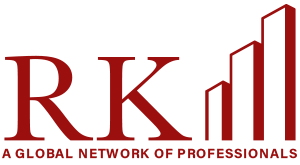Teaser Deck vs Pitch Deck - A Simple Guide
Pitch decks are vital tools in the business world. They help attract investors, partners, and clients. There are different types of pitch decks, but the focus here is on two: the teaser deck and the pitch deck.
In this blog, we will give you a detailed answer to the question what is the difference between a pitch and a teaser? We will discuss the components and the delivery system of both these decks.
What is a Teaser Deck?
A teaser deck is a short, impactful presentation. It’s designed to spark interest in your business. A teaser deck is not accompanied with a presentation by the business leaders. It is only read by the target audience so it should be self-explanatory and provide a snapshot without too many details.
What Is the Structure of a Teaser Deck?
Here is a detailed structure of a teaser deck.
- Cover Slide: This is your first impression. It should be visually compelling.
- Problem Statement: Here, you identify a market need or problem.
- Solution: Show how your product or service solves this problem.
- Market Opportunity: Talk about the potential market size.
- Unique Value Proposition: Explain what makes your business unique.
- Traction: Share early successes and milestones.
- Design and Messaging: The design should be professional and appealing. Keep your message clear and concise.
Teaser Deck Use Cases
Teaser decks are used in the fundraising process to inform investors about the business model and the industry of the company. Teaser decks can help in selection process of potential investors. They save time and resources, avoiding meetings with investors who may not be interested.
What is a Pitch Deck?
A pitch deck is more detailed and used in formal settings like investor meetings. It provides a comprehensive view of your business.
What is the Structure of a Pitch Deck
- Problem: Highlights the issue that the business intends to solve.
- Solution: Describes how the business proposes to solve the identified problem.
- Market: Details the target market size and potential customers.
- Product: Showcases the product or service, its features, and benefits.
- Traction: Demonstrates the business progress, sales, and user growth.
- Team: Introduces the team behind the business, highlighting their expertise.
- Competition: Contains analysis of competitors and the business’s competitive advantage.
- Financials: Presents financial projections and current financial status.
- Funding Request: Specifies the amount of funding needed and its intended use.
Pitch Deck Use Cases
A pitch deck can be used at investor meetings for detailed discussions with potential investors about the business, its prospects, and funding requirements. It can also be used at business conferences to present the business idea to a wider audience, including potential partners or customers.
Teaser Deck vs Pitch Deck
The main differences when it comes to teaser deck vs pitch deck lie in their depth, audience, and purpose. A teaser deck is brief, meant to pique interest. A pitch deck provides a full picture of your business.
A teaser deck is made to be read by the target audience, while a pitch deck is accompanied by a presentation from the founder or leader of the business. This is why a teaser deck can be sent to the investors as is. A pitch deck requires a special meeting for the presentation of the pitch deck.
When it comes to teaser deck vs pitch deck, both are important at different stages of business funding and investor engagement. Understanding their purposes and when to use each can be crucial for your business’s success.
